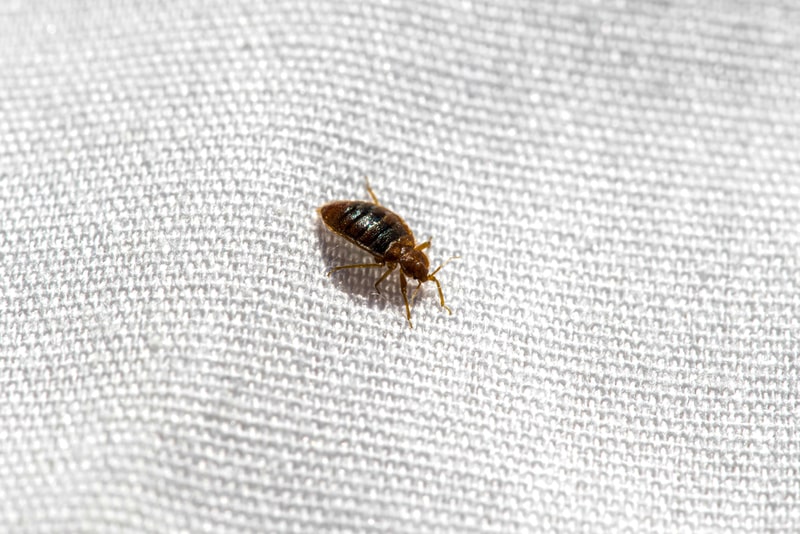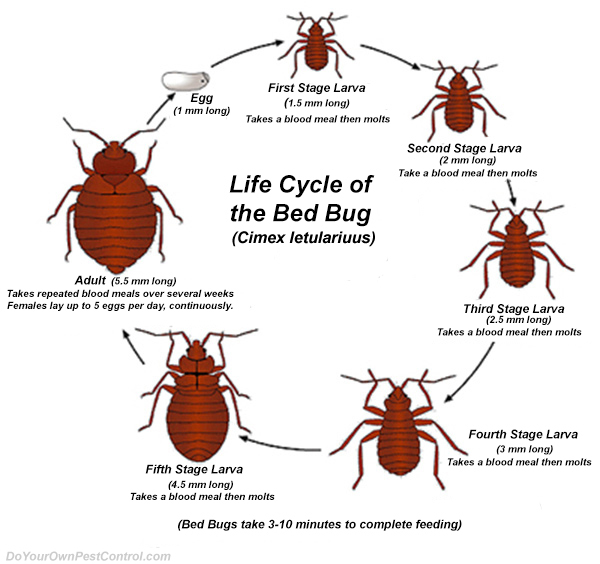
Bed bugs are parasitic insects in the family Cimicidae that feed on the blood of humans, mostly at night
Their bites can cause a host of minor health effects including minor skin rashes, minor skin abrasions, and other skin conditions such as allergic reactions. Most bed bug bites are not serious and will heal quickly. Some cases, however, may develop into severe skin infections if the bitten person does not immediately treat the bite with proper insecticide. Bed bug bites can also lead to minor skin changes ranging from minor spots of redness to more prominent blisters.
All bed bugs are born in the nests of human hosts, but they are unable to feed. After a host dies, the surviving adult bugs migrate out to their next host. The adult bugs feed for a few days, then die back to the nest and feed again before returning to the next human host to reproduce.
A bed bug is small enough to fit inside an average mattress, even when closed and the entrance is sealed with a cover. An infestation by bed bugs has a tendency to grow rapidly due to the fact that these pests lay millions of eggs on the surface of mattresses, furniture, or anywhere where they feed and reproduce.
Some people become suspicious that they may have bed bugs when they experience itching, rash, irritation, or even extreme redness of the body when they lie down at night. There are several methods of treatment available for treating bed bugs, including using pesticide sprays that are commonly used to eliminate bedbugs.
Bed bugs do not always leave a noticeable presence on furniture and mattresses, so home pest control companies have developed several types of mattress coverings to prevent the infestation from spreading to new areas. The most effective mattress coverings include plastic sheets, quilted sheets, and synthetic fiber bedding. The covers can help deter bed bugs from entering through cracks or crevices in furniture.
If the infestation is contained within a single room, bed bug spray is the safest way to get rid of these bugs. Although there are sprays available that can be used to get rid of infestations in various areas around the house, many people prefer to use an insecticide treatment product. instead of a spray because they are less harsh on the skin. Another advantage of insecticides is that they have no odor and are much safer than regular insecticides.

There are several types of bed bug spray available. Most contain one or two pesticides that are applied to a mattress or sheet or other item that they infest, which will kill the eggs. Some people choose to apply the insecticide directly to the infested area of the sheet or other items. Some bed bugs prefer to feed on certain fabrics and fabric, so an infested sheet or other fabric should be removed to allow the infested area to air out before applying the insecticide.
While insecticides are not as toxic as the pesticide sprays, insecticides are still toxic and should not be used to spray the entire area. Because it is impossible to completely eradicate all bugs, homeowners should practice proper protection methods, such as vacuuming, sealing cracks and crevices, and sealing cracks in clothing, curtains, and other fabrics that bed bugs may hide in. Once the infested area has been treated, homeowners should be diligent in cleaning and drying clothing, furniture, and other items that may have bedbug droppings, especially fabric, and carpet.
After all items have been treated with bed bug spray, insecticide cream should be applied as a final step in eliminating the infestation. The cream can be sprayed on areas of the home where the infestation has spread to, and it should be used on the bed bug droppings before the insecticide cream is sprayed on the fabrics.
Mattress covers are very effective at keeping bedbugs from entering your home. By sealing cracks and crevices, insecticide cream can be sprayed under the mattress and underneath the covers of sheets to keep bedbugs from entering the bed and moving around, and feeding. Insecticide cream is also good at getting rid of bugs hiding in your pillows and mattresses. This prevents bed bugs from laying eggs and returning to your bed once you've gotten rid of the bed bugs in the previous room.
Even when the bed bugs are not present, the bedbug spray can help reduce the number of bugs that enter the home by keeping their droppings on the mattress and the covers of sheets. When the bed bugs have left your bed to feed, insecticide cream can prevent them from re-infesting by coating the bedding with the insecticide spray. This prevents you from having to spray the spray again.


